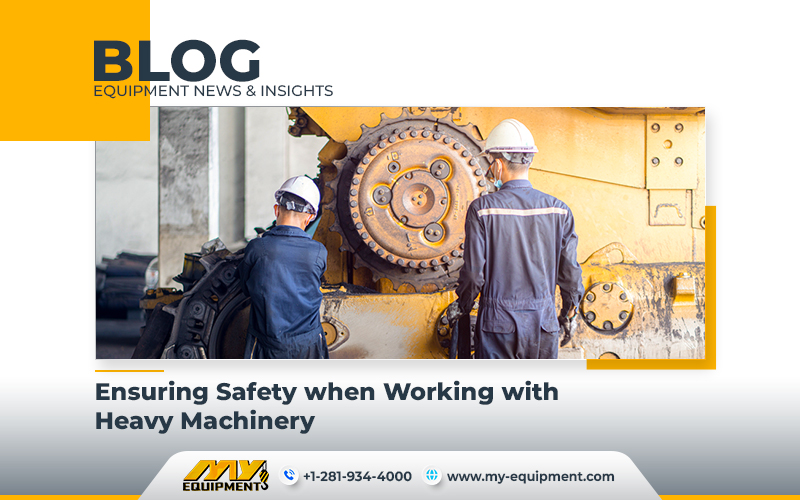Heavy mobile equipment used in construction poses a significant risks to the workers, pedestrians, and equipment operators. Accidents that involve heavy equipment, such as rollovers or collisions, are actually a leading cause of injuries and fatalities on construction sites. Today we will go over the importance of safety measures and provide guidelines for contractors and workers to mitigate the risks associated with heavy machinery.
Common Causes of Injuries and Fatalities
Falling Materials and Loads
Accidents can occur when materials or loads fall from equipment, endangering all the nearby workers. Proper handling and securing of materials is quite necessary if you want to prevent such incidents.
Blind Spots for Equipment Operators
Heavy equipment operators often have a very limited visibility, resulting in blind spots. This can lead to accidents involving pedestrians or ground workers who are not even visible to the operator. Awareness of blind spots and effective communication between operators and workers is also very important.
Improper Vehicle Operation and Maintenance
Incidents can arise from operators dismounting from vehicles without engaging the safety mechanisms, failing to apply brakes, or neglecting proper maintenance and lockout/tagout procedures. These issues can even lead to unintended vehicle movement or malfunction.
Equipment Rollover or Tipping
Poor stability, improper operation, or unfavorable ground conditions can result in things like equipment rollovers or tipping, posing significant risks to operators and nearby workers.
Governmental Controls and Precautions
Implementing administrative controls and safety procedures can significantly reduce accidents and fatalities related to heavy machinery. Consider the following precautions to help improve safety.
Use Qualified Operators and Spotters
It is important to ensure that all the equipment operators and spotters have received appropriate training and are qualified for their roles. Training employees in safe work techniques and awareness of heavy machinery dangers is very important.
Provide Instruction Manuals and Site Plans
Give operators access to instruction manuals and create site plans that include designated areas for vehicles and equipment movement, reducing the likelihood of accidents and backups.
Establish Restricted Zones and Rollover Protection
Designate restricted-access zones and implement rollover protection structures (ROPS) on equipment for better operator safety.
Maintain Equipment and Use Lockout/Tagout Procedures
Regularly inspect and maintain equipment so that you know if it is in good working order. Implement lockout/tagout procedures before servicing any equipment to prevent and kind of unintended activation or release of stored energy.
Safe Work Practices for Operators
Operators play a vital role in reducing the risk of accidents that are associated with heavy machinery. By following safe practices and being familiar with the equipment they operate, operators can make the site more safe.
Equipment Familiarity and Daily Checks
Operators should be knowledgeable about the equipment and conduct daily checks, including inspecting the brake system, lights, warning systems, and mirrors to ensure optimal functionality.
Avoiding Hazards
Operators should know that employees are clear of the machinery before starting operations. When entering or exiting equipment, maintain three points of contact and face the equipment. Always buckle up and refrain from overloading the vehicles.
Top Loading Safety
For top-loading vehicles, you should use cab shields or canopy protection to safeguard against falling objects or materials.
Safety Procedures and Ground Worker Awareness
Ground employees also play quite a vital role in reducing the risks that are associated with heavy machinery. Implementing safety procedures and fostering awareness among ground workers are essential.
Highly Visible Apparel and Avoiding Blind Spots
Ground workers should wear highly visible clothing when working near heavy equipment and avoid riding on moving equipment or positioning themselves in any blind spots.
Work Area Placement
Workers should also try and avoid working in close proximity to heavy machinery, especially in blind spots. Make eye contact with equipment operators before approaching a vehicle and make certain that they can see you.
Safe Travel and Suspended Loads
Workers should also wear seat belts and only travel in designated seating areas.


 1400 Broadfield Blvd, Houston, TX 77084,
USA.
1400 Broadfield Blvd, Houston, TX 77084,
USA.